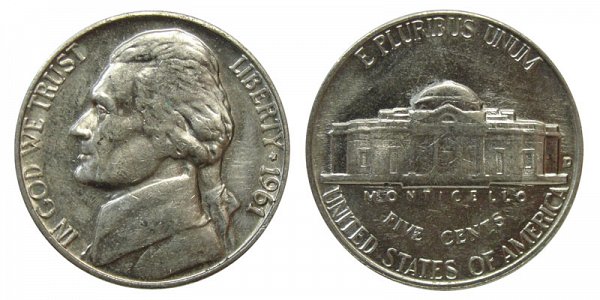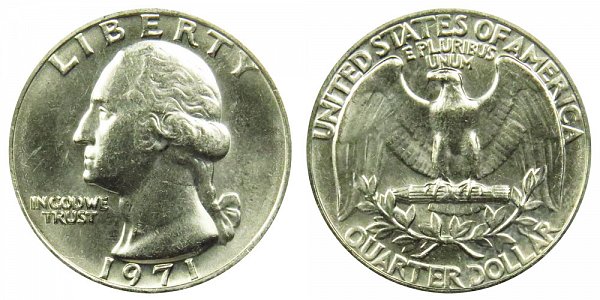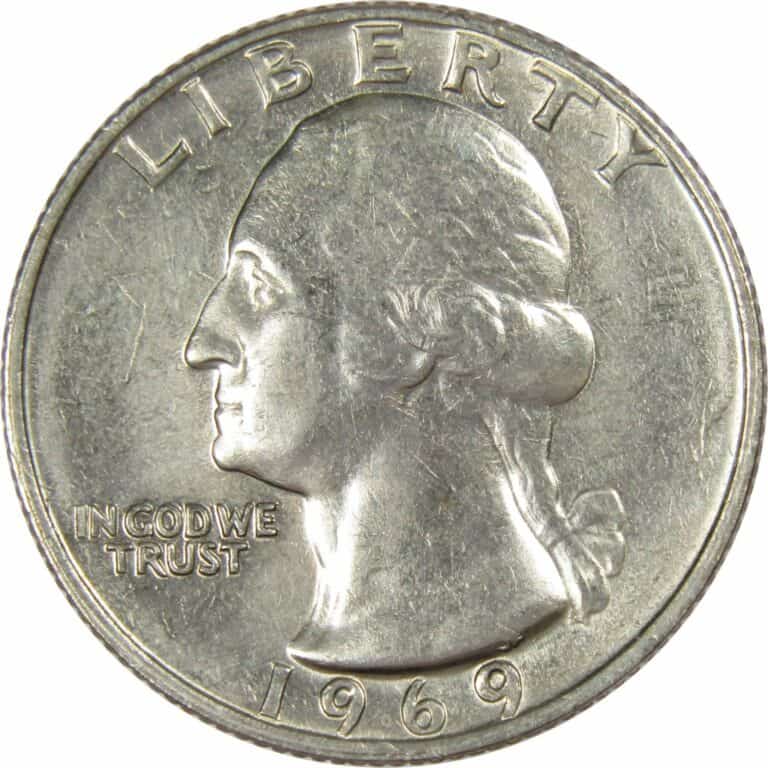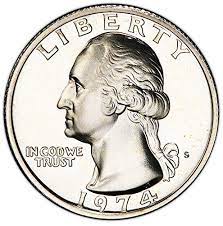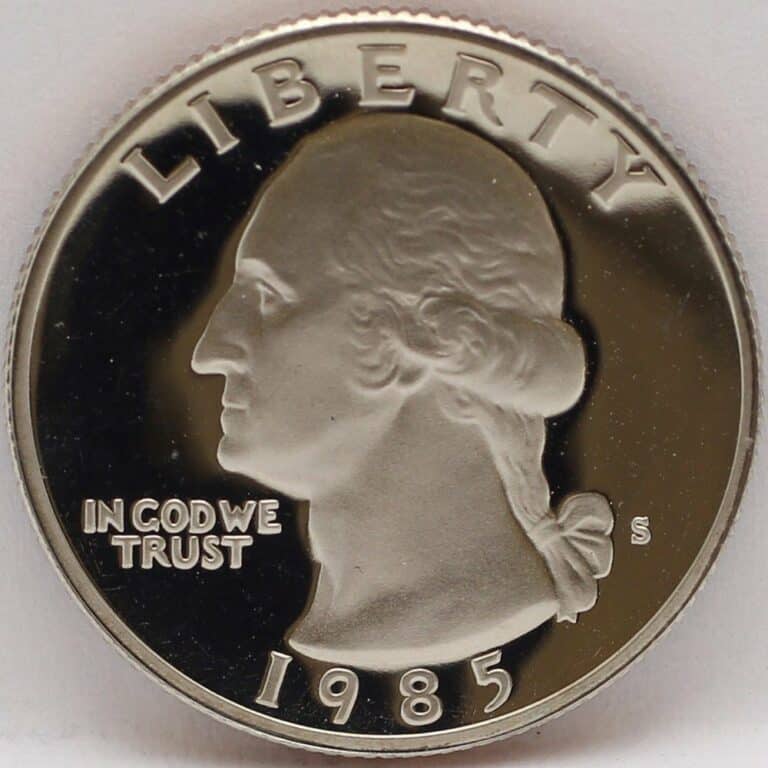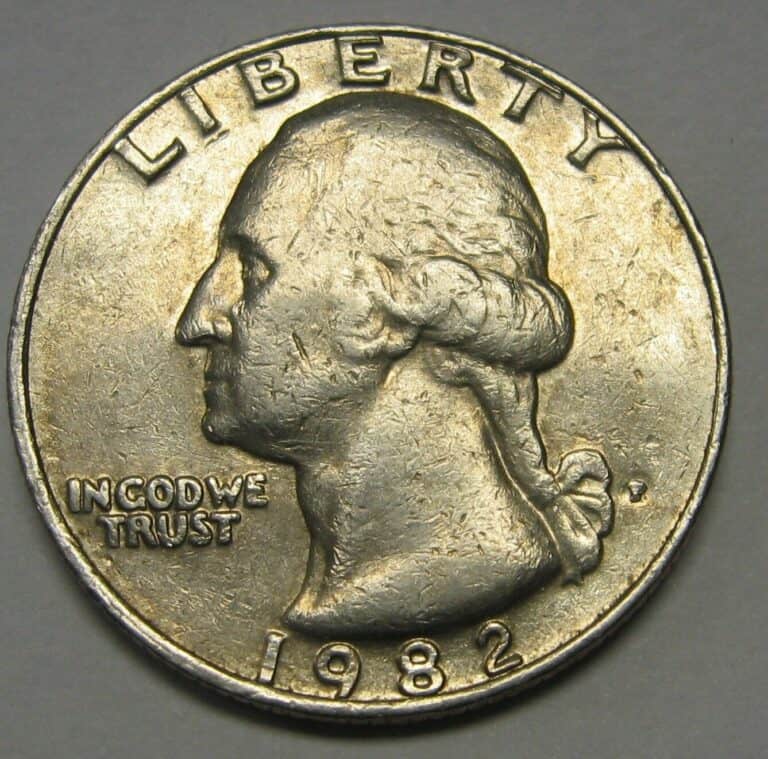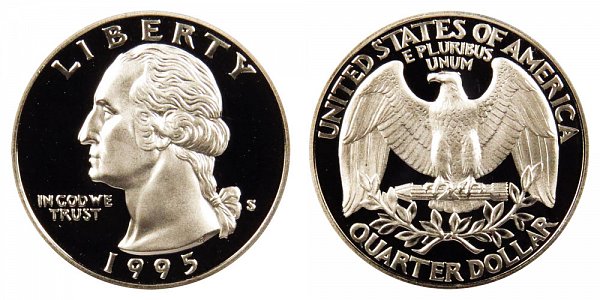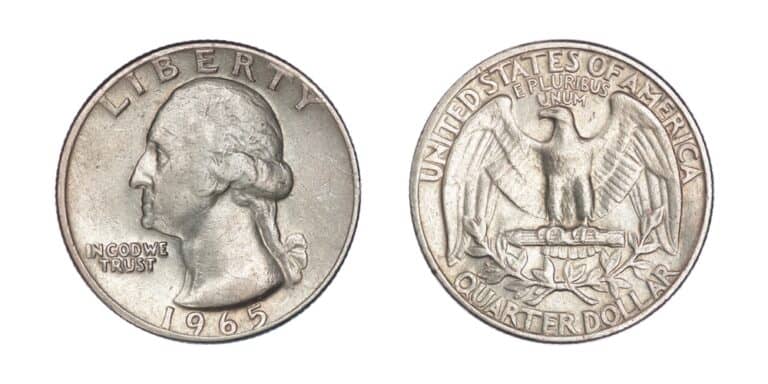1971 Quarter Value: How Much Is It Worth Today?
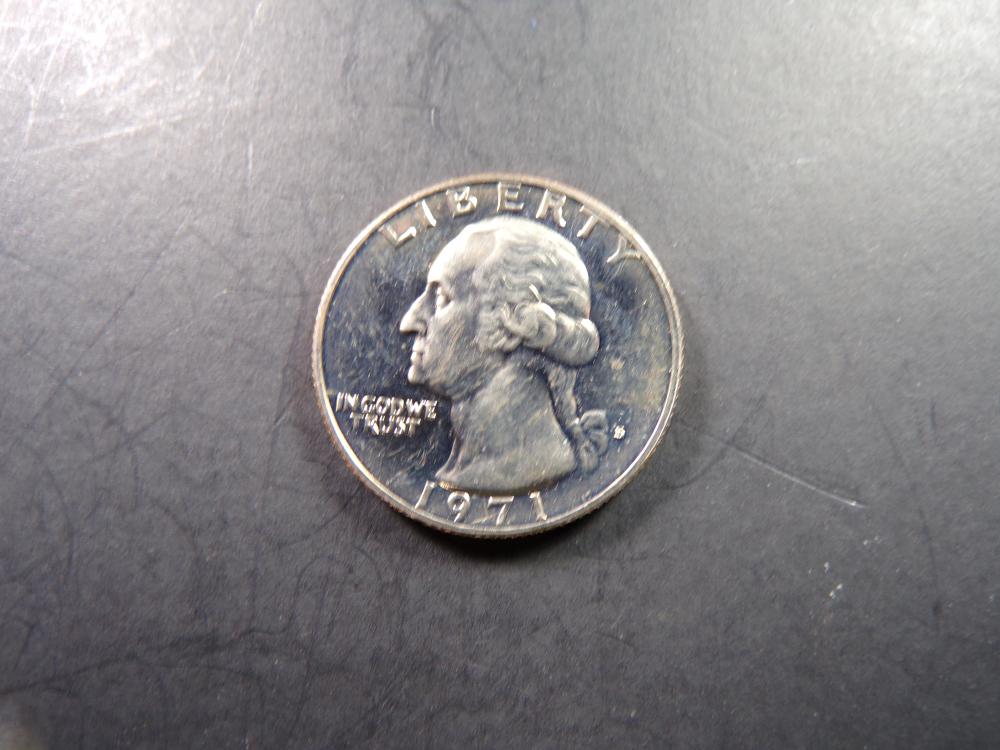
The 1971 Washington quarter coin isn’t exactly rare nowadays. Washington quarters had been minted every year for most of the 20th century and countless of them are still in circulation. 1971 didn’t see the largest mintage of Washington quarters but it didn’t see the smallest either with over 371 million coins coming out of the three US Mints that year.
So, what does this mean for the value of the 1971 quarter today? Are these coins worth holding on to? What are the different variations of this coin and the differences between them? What other details are there for you to keep an eye on? Let’s find out below.
1971 Quarter Value Chart |
||||
| Mint mark | Good | Fine | Extremely Fine | Uncirculated |
| 1971 “D” Quarter Value | $0.25 to $0.30 | $0.25 to $0.30 | $0.25 to $0.30 | $1,100+ |
| 1971 No Mint Quarter Value | $0.25 to $0.30 | $0.25 to $0.30 | $0.25 to $0.30 | $1,250+ |
| 1971 “S” Proof Quarter Value | n/a | n/a | n/a | $7,574+ |
As with most such coins from the second part of the 20th century that have low monetary value and made it into very wide circulation, the average value of a 1971 quarter is rarely higher than its face value of $0.25. The preservation and visual qualities of such a coin have to be outright superb for it to be worth more than $0.25 or $0.30 and only a select few coins that never made it into circulation can have that.
Additionally, the presence of certain manufacturing errors is hugely influential for the value of individual 1971 quarters as it helps coins to stand out from the hundreds of millions of other coins out there.
1971 “D” Quarter Value
By far, the most common 1971 quarter is the one bearing the “D” mint mark. These coins were made by the Denver Mint and amount to 258,634,428 total coins produced in 1971. What’s more, the quality of these coins ended up quite better than that of those struck by the Philadelphia Mint in the same year. This doesn’t necessarily translate into higher value, however.
The reason for that is all coins that went into circulation in 1971 are guaranteed to have gathered enough wear and tear on them over the past half a century to not be worth anything over their face value. Whether from Denver or from Philly, a 1971 Washington quarter needs to be uncirculated to be worth more than $0.25-$0.30.
For some higher-valued examples, there are 1971 “D” quarters that can sell for not just a few dollars but for up to $1,100 and more if they have some of the best uncirculated quality grades such as MS 68. The most expensive 1971 “D” quarter ever sold was an MS 68 coin that sold for $4,560 in 2019. It is estimated that there only a couple of coins of this quality grade known today, however.
As for their other characteristics, the Denver 1971 quarters bear the exact same design as the one that was pioneered for the Washington quarter back in 1932 in honor of Washington’s bicentennial. The obverse is designed by John Flanagan and was based on Jean-Antoine Houdon’s 1786 sculpture of George Washington.
Interestingly enough, Flanagan’s bid for the coin’s obverse design wasn’t the first choice – the (Washington) Bicentennial Committee congress that was tasked with finding a designer for the bicentennial coin had chosen Laura Gardin Fraser for the task of designing the coin’s obverse side.
However, at the last moment, Treasury Secretary Andrew Mellon decided not to give the job to Laura Fraser and gave it to John Flanagan instead. That designer was also tasked with working on the coin’s reverse side which he did single handedly rather than basing it on anything.
So, what do the obverse and reverse sides look like? The obverse portrays Washington’s face looking to the left, again, based on the sculpture of Jean-Antoine Houdon. The word “Liberty” is engraved right above the head, the phrase “In God we trust” – to the left of it, just under the chin, and the year of the coin’s mintage – in this case 1971 – is placed below.
For coins minted in Denver, there’s also a tiny “D” mint mark to the lower right of Washington’s head, just next to the band on his hair. The reverse side features an eagle with wings spread out, sitting on a bundle of arrows. To olive branches form a laurel underneath with the words “Quarter Dollar” further below them.
On top of the eagle’s head is written the motto “E pluribus unum”, i.e. “From many, one” and further above it – “United States of America”. The edge of this coin is reeded, as has been the case since 1932.
Another note that often comes up is that this coin doesn’t have any silver in it – none of the 1971 quarters do as silver was phased out of these coins by the US Mint years before that. This was done once silver’s value was appreciated and the coin’s melted value rose above its face value. So, to prevent people from melting or hoarding their coins, the Mint switch to a 75% copper & 25% nickel alloy.
1971 No Mint Quarter Value
The 1971 no-mint quarter, also known as the Philadelphia quarter, was minted by the Philly Mint. This mintage was less numerous than the Denver mintage of the same year, sitting at “only” 109,284,000 coins. That’s still quite a sizable number, however, so the no-mint Philadelphia 1971 quarters are by no means rare.
Another thing to note would be that these particular coins ended up of a relatively lower quality than the ones struck in Denver. This wasn’t some general rule that always happened – that’s just how things turned out in 1971. While this sounds like the 1971 no-mint coins should be less valuable today, however, that’s not the case.
The reason is simple – both Denver and Philly coins that made it into circulation have gathered so much wear and tear over the years anyway that their price is more or less even anyway – $0.25 to $0.30 for most circulated coins, up to $0.85 for some rarer examples that have been kept in decent conditions, and more only for uncirculated coins of the highest quality that have some unique markings or errors on them.
The most expensive 1971 no-mint quarter ever sold was graded MS 67 (a grade lower than the most expensive 1971 “D” quarter) and it sold for $3,840 in 2019. Had that coin been graded at MS 68, it likely would have sold for exactly as much as its “D” counterpart.
As for other differences between the Philly no-mint 1971 quarter and the coins minted in Denver – there aren’t any. The coins minted in Philadelphia simply don’t have a mint mark where the Denver’s “D” is because the Philadelphia Mint didn’t put any mint marks on such coins prior to the 1980s.
1971 “S” Proof Quarter Value

A third variant of this coin that you’d also want to know about is the proof quarter from 1971, minted by the San Francisco Mint. Like other proof coins, this quarter’s main purpose is to exist as proof of fidelity – a coin all others are compared to when trying to assess their fidelity, rule out counterfeits, and so on.
As such, proof coins of all types are traditionally made to be of the best possible quality – so much so that they are struck with entirely different dies and are significantly more expensive than regular circulation coins.
Naturally, this, together with the fact that there are fewer of them, has made proof coins very valuable for numismatists. The US Mint is aware of that and has been minting extra proof coins of every type for a long time to sell to collectors and make a profit. In the case of the 1971 quarter, the San Francisco Mint produced a grand total of 3,200,000 proof coins that were made available for collectors nation-wide.
Those proof coins can be found in various conditions and quality grades today but are generally much better than the vast majority of “D” and no-mint 1971 quarters. According to the latest records, there are about 429 proof 1971 quarters with PR 67 grades available today, 1,228 coins in PR 68 condition, and a single PR 70 1971 proof coin. All of those sell for significantly more than non-proof coins of the same year and of comparable quality.
1971 Quarter Grading
We talked a lot about grading above and it can be difficult to distinguish between the different quality grades if you’re new to numismatics. Generally, most people today use grading scales such as the Sheldon coin grading scale which rank coins on a 1-to-70 scale based on how well-preserved they are. The letters added to the numbers typically indicate coin types – PR for “proof”, MS for “mint state”, etc.
For a more visual presentation on coin grading, you can check this video.
Lists of 1971 Quarter Errors
The second major factor that plays into the overall value of coins is the presence of errors or unique features that have occurred during the minting of the coin. As with most other things in life, the rarer a thing is, the more valuable it becomes – errors may sound “bad” but they make coins unique which raises their value.
This isn’t to say that every error is “good” either, however – some errors such as the blank planchet error (where the coin just doesn’t get printed on the planchet) are so unappealing that they just don’t increase the coin’s value even if it’s technically rare. Here’s a good video to showcase some common errors in 1971 quarters.
1971 Quarter Broad Struck Error
This error is especially common in the Philadelphia 1971 quarter as those were generally more poorly struck than the Denver quarters. A broad-struck coin is a coin that has been struck outside of its restraining collar. The result of that is a wider but thinner coin than normal.
A “good” broad struck coin will still have its observe and reverse designs fully visible and well-minted. When this happens, the result can be a pretty substantial bump in value.
1971 Quarter Double Die Error
Double die errors occur when there has been a shift between the hub and the die between two strikes on the same coin. When this happens, the design minted onto the coin can get distorted – exactly in what way and how much depends on how major the shift was.
Usually, we’re talking about the end result being a bit blurry, pivoted, distended, or offset. While this sounds bad, this effect can actually often be outright visually appealing and, as such, it can raise the coin’s value quite a bit.
1971 Quarter Clipped Planchet Error
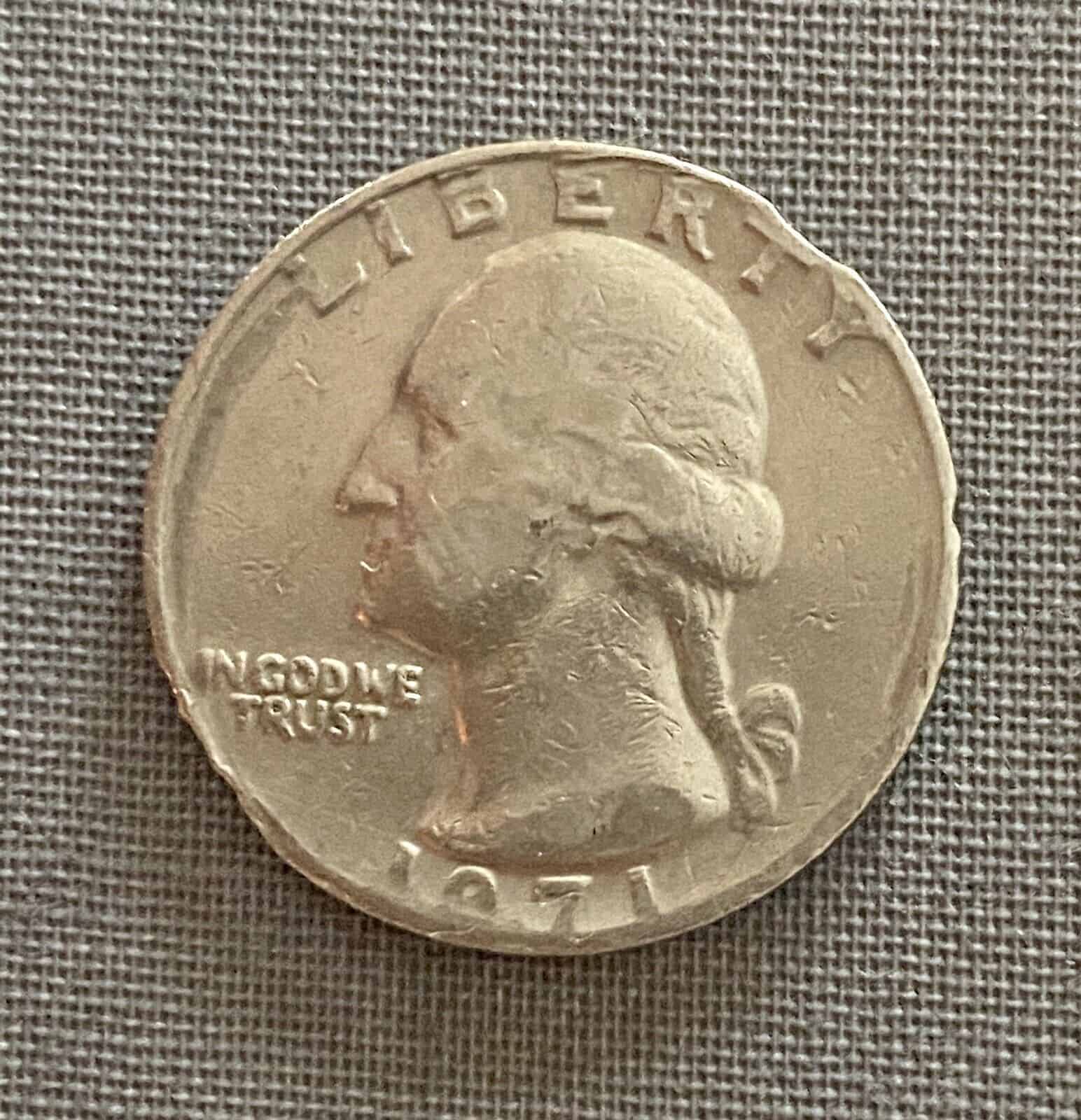
This type of error is exactly what it sounds like – it happens when the blanking die overlaps and accidentally cuts a part of the coin’s edge off. There are other errors that can look like a clipped planchet, however, so it’s usually wise to consult with a numismatist to make sure exactly why your coin has a clipped edge.
1971 Quarter FAQ
Are 1971 quarters rare?
Not really – they are not the most common year of Washington quarters but they are certainly not rare overall. Uncirculated and very high-quality 1971 quarters can be very rare, however, especially when we go into the top grades such as MS 67, MS 68, etc.
Do 1971 quarters have any silver in them?
No, a 1971 quarter shouldn’t have any silver in it as, by that time, the US Mint had already started minting these coins with a 75% copper and 25% nickel alloy.
Where is the mint mark on a 1971 quarter?
The “D” mint mark for 1971 quarters minted by the Denver Mint should be located on the obverse side, to the lower right of Washington’s head. The “D” is fairly small and easy to miss. 1971 quarters minted in San Francisco or Philadelphia won’t have a mint mark, however – this isn’t an error or a unique feature, it’s just how they were made.
